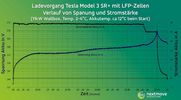You said "a little over 200 at 80%", so that's actually a little over 250.Well my sticker said 448km and I only get 200km.
The US build SR+ for me reliably does 300 for me (100%) in good weather on 110km/h freeways without much net gain or loss in altitude (eg the Pacific Hwy).



